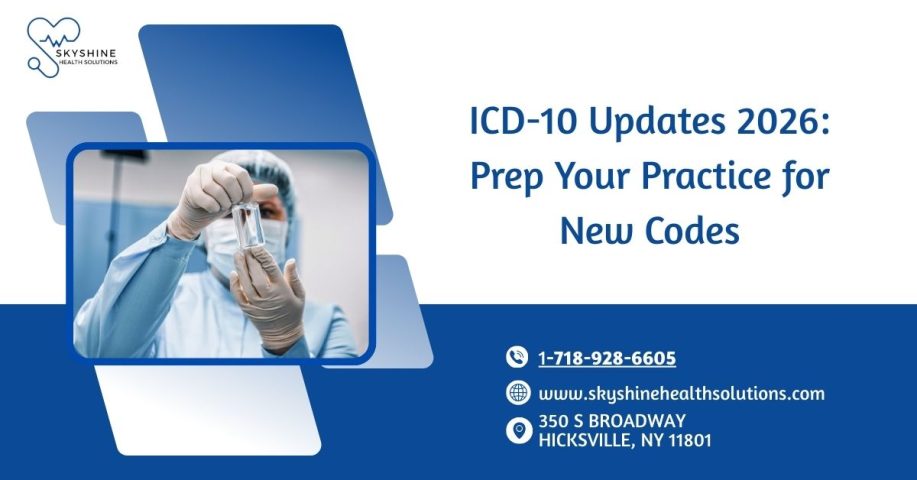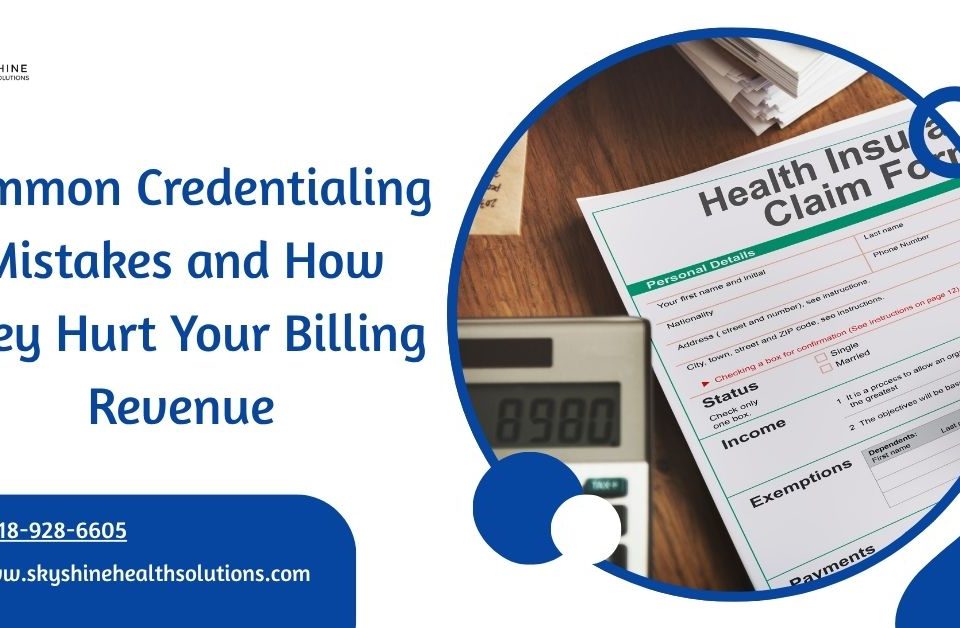
Outsourced vs. In-House Billing: Pros & Cons for Small Practices
June 22, 2025
Understanding ICD Codes for Diseases: A Comprehensive Guide
June 30, 2025The International Classification of Diseases (ICD-10-CM) codes are updated annually to reflect advancements in medical knowledge and healthcare needs. For small medical practices, staying ahead of the 2026 ICD-10-CM updates is crucial to ensure accurate billing, minimize claim denials, and maintain compliance. This blog explores the key changes for 2026 and offers practical steps to prepare your practice for the new diagnosis codes.

What’s New in the 2026 ICD-10-CM Updates?
The Centers for Medicare & Medicaid Services (CMS) and the CDC’s National Center for Health Statistics release annual updates to the ICD-10-CM code set, effective October 1, 2025, for the 2026 fiscal year. While the exact changes are still being finalized, based on historical trends and preliminary announcements, we can expect:
-
-
-
New Codes: Approximately 200–300 new codes to address emerging conditions, such as novel infectious diseases or specific injury types.
-
Revised Codes: Updates to existing codes for greater specificity, especially in areas like mental health, oncology, and chronic diseases.
-
Deleted Codes: Removal of outdated or redundant codes to streamline documentation.
-
Focus Areas: Enhanced codes for social determinants of health (SDOH), rare diseases, and post-COVID conditions.
-
-
These updates aim to improve diagnostic precision and support better patient outcomes, but they also require proactive preparation to avoid disruptions in your revenue cycle.
Why ICD-10 Updates Matter for Your Practice
Accurate ICD-10 coding is the backbone of medical billing. Errors or outdated codes can lead to:
-
-
-
Claim Denials: Incorrect codes result in rejected claims, delaying reimbursements.
-
Compliance Risks: Non-compliance with CMS regulations may trigger audits or penalties.
-
Revenue Loss: Inaccurate coding can undervalue services or miss reimbursable conditions.
-
Patient Care Impact: Precise coding ensures proper documentation, supporting better care coordination.
-
-
By preparing for the 2026 updates, your practice can maintain financial health and focus on delivering quality care.
Steps to Prepare Your Practice for 2026 ICD-10 Updates
To ensure a smooth transition, follow these actionable steps:
1. Stay Informed About the Changes
-
-
-
Access Official Resources: Check the CMS website (cms.gov) or CDC’s ICD-10-CM page for the final 2026 code set, typically released in mid-2025.
-
Subscribe to Updates: Join newsletters from medical billing associations or software vendors for timely alerts on code changes.
-
Attend Webinars: Participate in CMS or industry-led webinars to understand the clinical and billing implications of new codes.
-
-
2. Train Your Billing and Coding Staff
-
-
-
Schedule Training Sessions: Enroll your team in ICD-10-CM training programs offered by organizations like AAPC or AHIMA.
-
Focus on High-Impact Codes: Prioritize training on codes relevant to your specialty, such as new oncology or SDOH codes.
-
Use Case Studies: Practice coding with real-world scenarios to reinforce learning and reduce errors.
-
-
3. Update Your Billing Software
-
-
-
Verify Software Updates: Confirm with your EHR or billing software vendor that the 2026 ICD-10-CM codes will be integrated by October 1, 2025.
-
Test Systems Early: Run test claims in September 2025 to identify and resolve any software glitches.
-
Leverage Automation: Use AI-driven coding tools to flag outdated codes and suggest accurate replacements.
-
-
4. Review Documentation Practices
-
-
-
Enhance Clinical Documentation: Educate providers on documenting conditions with the specificity required for new codes (e.g., laterality or severity).
-
Conduct Chart Audits: Perform pre-update audits to identify documentation gaps that could lead to coding errors.
-
Collaborate with Clinicians: Hold briefings to align clinical and billing teams on new code requirements.
-
-
5. Monitor Claim Performance
-
-
-
Track Denials: After October 1, 2025, monitor denial rates to identify issues with new or revised codes.
-
Analyze Reimbursement Trends: Compare 2026 reimbursements to prior years to ensure accurate coding maximizes revenue.
-
Engage Payers Early: Contact insurance providers to clarify coverage for new codes and avoid surprises.
-
-
Specialty-Specific Considerations
Different specialties may face unique challenges with the 2026 updates. For example:
-
-
-
Primary Care: Expect new codes for chronic conditions and SDOH, requiring detailed patient history documentation.
-
Orthopedics: Look for expanded codes for specific injuries or post-surgical complications.
-
Mental Health: Anticipate more granular codes for disorders like anxiety or substance use, demanding precise clinical notes.
-
Pediatrics: Watch for updates to codes for congenital conditions or vaccine-preventable diseases.
-
-
Check specialty-specific resources or consult with your billing service to tailor your preparation.
Real-World Example
A small family practice neglected the 2024 ICD-10 updates and faced a 10% increase in claim denials due to outdated codes for respiratory conditions. By investing in staff training and software updates for 2025, they reduced denials by 15% and improved cash flow within three months. Proactive preparation for 2026 can yield similar results for your practice.
Start Preparing Now
The 2026 ICD-10-CM updates are an opportunity to enhance coding accuracy and optimize reimbursements, but they require early action. By staying informed, training staff, updating systems, and refining documentation, your practice can navigate the changes seamlessly.
Check related blog Understanding ICD Codes for Diseases: A Comprehensive Guide
















